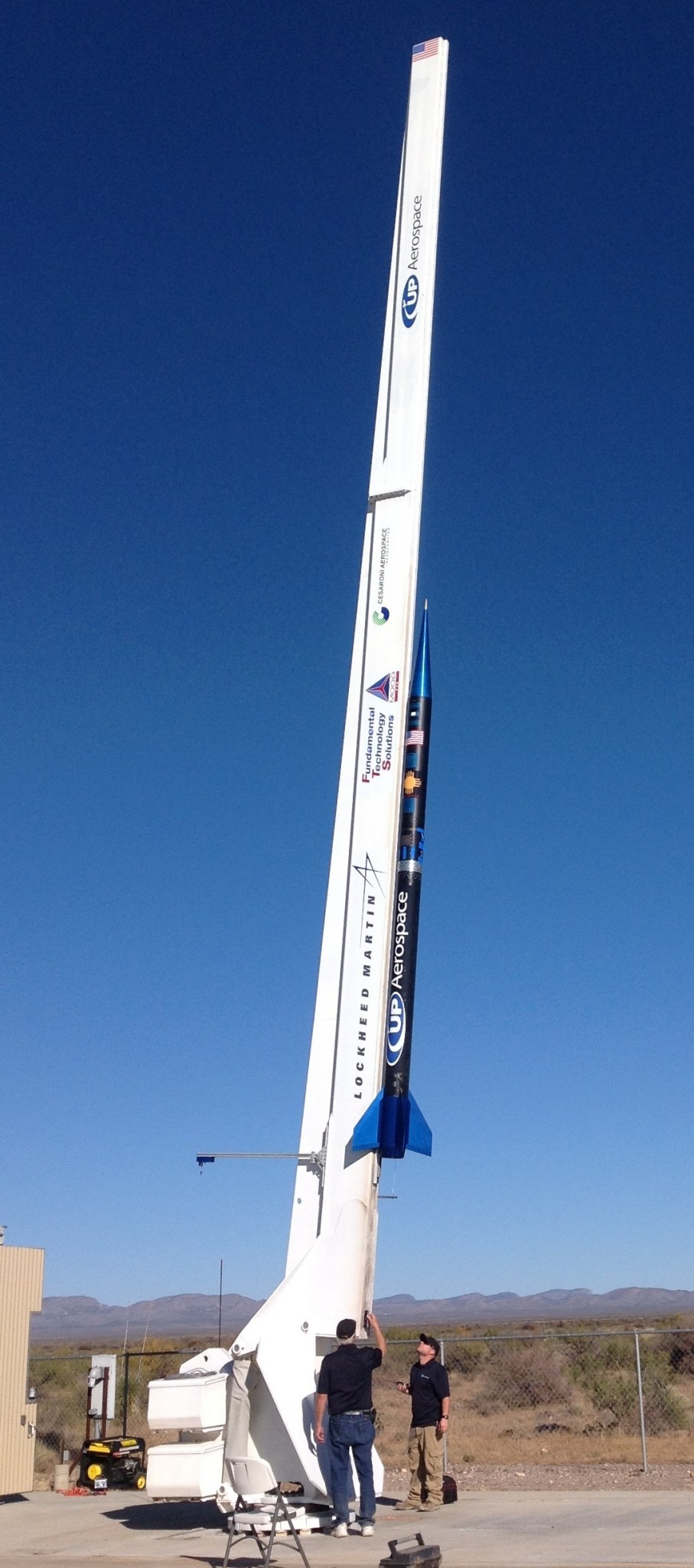Four NASA sponsored experiments were provided nearly four minutes of microgravity flight and testing after UP Aerospace’s SpaceLoft rocket SL-9 soared into suborbital space from Spaceport America outside of Las Cruces, New Mexico on Thursday.
While flying on suborbital launch vehicles in zero gravity, experimental technologies are briefly exposed to the space environment where they are expected to operate.
Funded by NASA’s Flight Opportunities Program, three of the technologies were flown in collaboration with NASA’s Game Changing Development Program: an advanced micro sun sensor from NASA’s Jet Propulsion Laboratory in Pasadena, Calif. a radiation-tolerant computer system from Montana State University, Bozeman and a vibration isolation platform from Controlled Dynamics, Inc. of Huntington Beach, Calif.
The vibration isolation platform has also been selected by the Center for the Advancement of Science in Space (CASIS) for further development on the International Space Station. This system will dampen experiments from fluctuations and disturbances that occur aboard spacecraft.
The fourth experiment from the Universitat Politècnica de Catalunya, Spain was investigating the effect of controlled vibrations on multiphase flow systems such as those found in environmental systems and fuel tanks.
NASA’s Flight Opportunities Program helps foster the growth of the commercial spaceflight market while helping fulfill the overall goal of advancing space technology to meet future mission needs. The program selects promising technologies from industry, academia and government, and provides valuable testing for them on commercial suborbital launch vehicles. This approach takes technologies from a laboratory environment and gives them flight heritage so that they can be considered for infusion into exploration missions.
Both Game Changing and Flight Opportunities Programs are part of the agency’s Space Technology Mission Directorate, which is innovating, developing, testing, and flying hardware for use in NASA’s future missions.
Over the next 18 months, NASA’s Space Technology Mission Directorate will make significant new investments that address several high priority challenges for achieving safe and affordable deep-space exploration. For more about NASA’s investment in space technology, visit:
https://www.nasa.gov/spacetech
Leslie Williams, Public Affairs
NASA Armstrong Flight Research Center




























